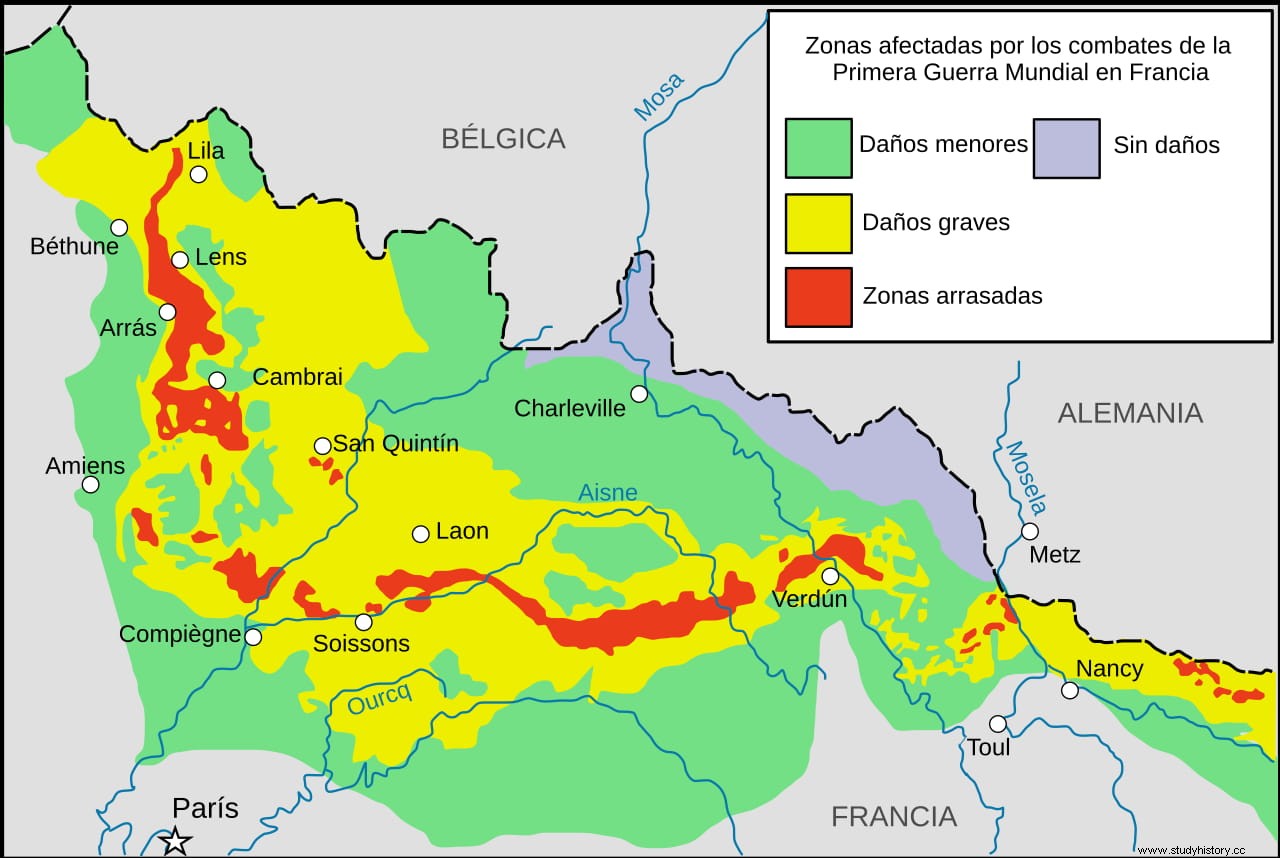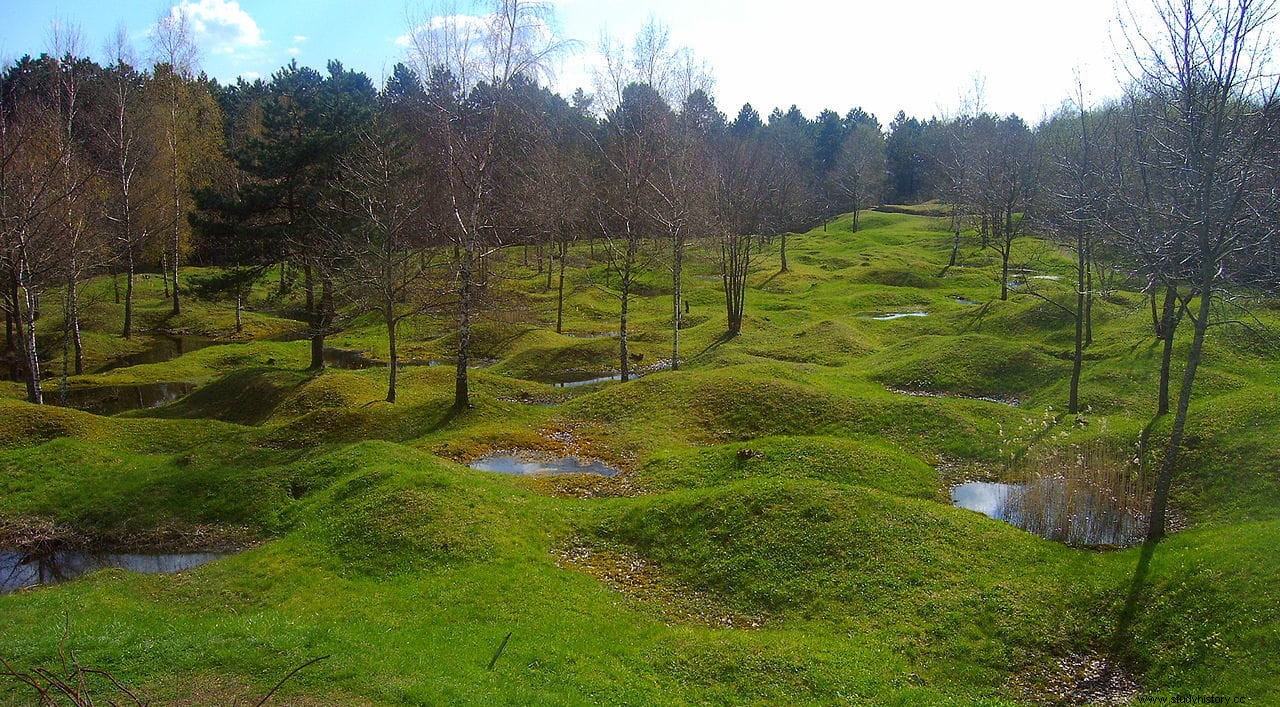At this point it may seem strange that there is a place, or places, in Europe beyond the consequences of the Chernobyl nuclear accident, where life is not possible. But we are not talking about remote or peripheral places. We are talking about the heart of Europe, precisely the strip of territory that extends to the north and northeast of France, next to the Belgian border.
There, within a triangle formed by the towns of Lille, Compiègne and Verdun, we find the Red Zone . They are a chain of discontinuous territories that the French government isolated after the First World War. On the map they are identified by an intense red, and surrounded by other yellow, green and blue territories, depending on the level of destruction and the damage suffered during the conflict.
Originally they were more than 1,200 square kilometers that were considered so severely damaged, both physically and environmentally, that human life was not possible on them. Instead of being immediately cleaned up after the war, it was decided to let nature reappropriate the territories.

The most affected, those marked in red, were defined as completely devastated, impossible to clean, impossible to support human life , and severe access restrictions were established that are still maintained today.
Activities such as agriculture and forestry were prohibited due to the vast amounts of human and animal bodies and the millions of tons of unexploded ordnance contained in these lands. Some towns were abandoned and were never allowed to be rebuilt.
Among the shells still left there unexploded are gas bombs, grenades and millions of rusty bullets. The soil is heavily contaminated by lead, mercury, chlorine, acids and other dangerous gases, to which are added biological remains.

Every year tens of tons of projectiles are recovered at a rate that specialists estimate will take no less than 700 years to complete the cleanup of the area. Experiments carried out between 2005 and 2006 found up to 300 projectiles per 10,000 square meters, only in a depth of 15 centimeters.
Some of these areas have been tried to recover through reforestation, but the concentration of arsenic in the soil is so high that 99 percent of the plants continue to die.
But the Red Zone is not the only place that has suffered the consequences of wars in Europe. Other territories in Belgium and Germany, for example, continue to suffer from the impact of millions of tons of buried ammunition, which occasionally comes to light.
